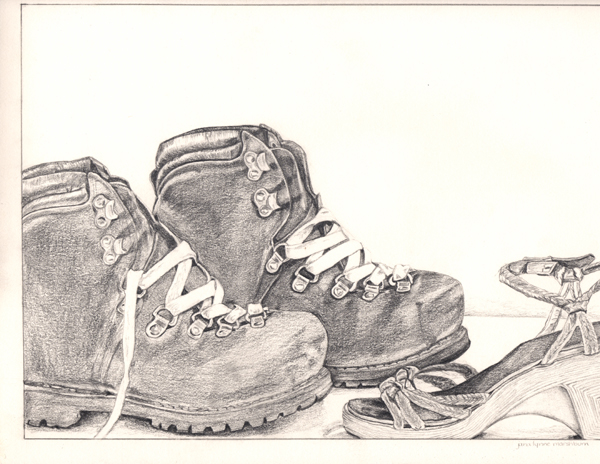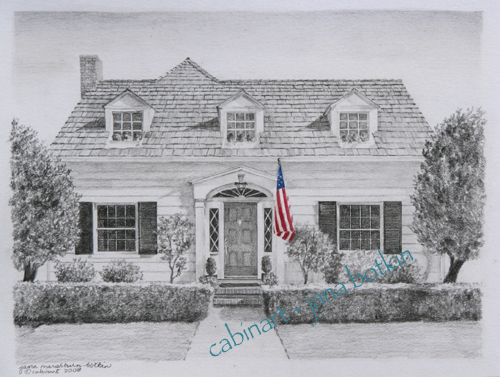There have been many art teachers in my life, and each one seems to have hard and fast rules. Several colored pencil (CP) teachers have said NEVER USE BLACK. Another CP teacher said, “If you aren’t supposed to use black, why do they manufacture it?” That strikes me as pure (un)common sense.
One CP teacher said to ALWAYS put the darkest color as the bottom layer and work up to the lightest color. Another said ALWAYS start with the lightest color as your base and then add layers in order of increasing darkness. I have done both on the same drawing and gotten the same result!
My best drawing teacher in college only let us draw with a 6B, which is a very soft black pencil. He did not let us smear or blend with any tool, including our fingers. He never told us why this was So Very Important, but now with many years of hindsight, I have this guess: if you could learn to control that one pencil, you could make any pencil do anything you wished it to do. It took me years to be able to use the entire range of pencils available because his idea was so deeply etched into my head. This is a drawing from his class:
Some of the painting teachers I have listened to say “NEVER use white alone”. (What are you supposed to use if that is the color you need??) Most say, “NEVER use black”. At an art show of Very Big Deal Artists, one of the artists I spoke with told me of his layering process and it included black paint!! Go figure.
Many of my students ask me how to hold their pencils. I show them how I hold mine, and tell them to try it, and to try anything that feels comfortable to them. The point is that there are some places in life where there are absolutes, but in art the only absolutes are determined by the results you desire.



